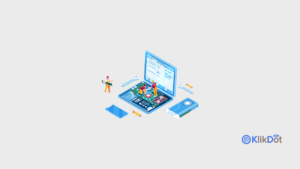The Internet of Things (IoT) has revolutionized industries by connecting devices, sensors, and systems to collect and exchange data, enabling smarter decision-making and automation. This article delves into IoT applications, discussing their definitions, advantages, disadvantages, and offering practical insights on implementation and management.
Understanding IoT Applications

IoT applications involve the use of connected devices and sensors to gather data, analyze patterns, and automate processes across various sectors. From smart homes and cities to industrial automation and healthcare, IoT enhances efficiency, improves resource management, and enhances user experiences. Key components include sensors, connectivity technologies (like Wi-Fi and Bluetooth), cloud computing for data storage and analysis, and AI for data insights and automation.
Advantages of IoT Applications
- Improved Operational Efficiency: IoT enables real-time monitoring of equipment and processes, optimizing operations and reducing downtime.
- Enhanced Decision-Making: Data collected from IoT devices provides actionable insights for informed decision-making and predictive maintenance.
- Cost Savings: Automation and predictive maintenance help reduce operational costs and extend the lifespan of equipment and assets.
- Enhanced Customer Experience: IoT-enabled devices offer personalized services and seamless interactions, improving customer satisfaction and loyalty.
- Environmental Impact: IoT applications promote sustainability by optimizing energy usage, reducing waste, and enhancing resource efficiency.
Disadvantages of IoT Applications
- Security Risks: Increased connectivity exposes IoT devices to cyber threats, requiring robust cybersecurity measures to protect data and privacy.
- Complexity: Integrating diverse IoT devices and systems can be complex, requiring compatibility and interoperability standards.
- Data Privacy Concerns: Collecting and sharing sensitive data raises privacy concerns and regulatory challenges, requiring compliance with data protection laws.
- Scalability Issues: Managing a large number of IoT devices and data streams can be challenging without scalable infrastructure and management solutions.
- Dependency on Connectivity: Reliability on network connectivity poses risks of downtime and disruptions, affecting operational continuity.
Tutorial: Implementing and Managing IoT Applications
- Define Objectives and Use Cases: Identify specific business objectives and use cases for IoT deployment, focusing on areas such as efficiency, customer experience, or sustainability.
- Select Appropriate IoT Devices: Choose IoT devices and sensors that align with business needs and operational requirements, considering factors like connectivity, power consumption, and data security.
- Integrate with Existing Systems: Ensure compatibility and seamless integration of IoT devices with existing IT infrastructure and business systems, leveraging APIs and middleware solutions.
- Implement Robust Security Measures: Implement encryption, authentication mechanisms, and regular security audits to protect IoT data and devices from cyber threats.
- Data Management and Analytics: Utilize cloud platforms and analytics tools to store, process, and analyze IoT data, extracting actionable insights for operational improvements.
- Monitor Performance and Maintenance: Establish monitoring mechanisms to track device performance, detect anomalies, and schedule preventive maintenance to minimize downtime.
- Educate and Train Staff: Provide training to employees on IoT usage, security protocols, and data handling practices to mitigate risks and ensure responsible use of IoT technology.
Conclusion
IoT applications represent a transformative force across industries, offering unprecedented opportunities for efficiency, innovation, and customer engagement. While addressing challenges such as security risks, complexity, and scalability, the benefits of operational optimization, cost savings, and enhanced decision-making make IoT indispensable. By adopting best practices, leveraging advanced technologies, and prioritizing data security and privacy, organizations can successfully harness the power of IoT to drive business growth and competitiveness in the digital era.
Stay tuned to KlikDot for more insightful articles and tutorials on IoT applications, emerging trends, and best practices for implementing and managing IoT solutions effectively.







Tinggalkan komentar